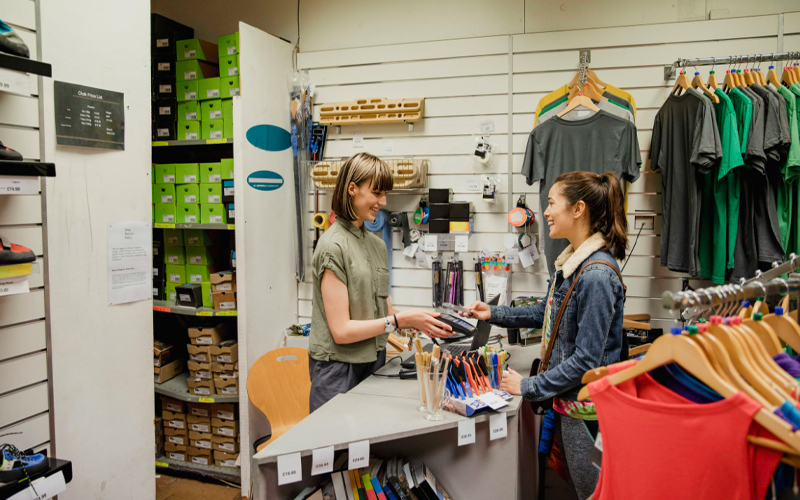We are living in an era, where customers demand seamless multi-channel and cross-channel shopping experiences that deliver convenience, ease and instant gratification. According to McKinsey, 60% of consumers in Germany, the UK and the US engage equally with both online and offline shopping channels. To stay competitive, retailers need to be available at the intersection of physical and digital mediums to reach the customers where they are.
Virtual shopping involves using the power of cutting-edge technologies to enhance the shopping experience for online shoppers. With all the excitement around virtual shopping, let us understand what it is and how it is shaping the future of e-commerce.
Virtual shopping provides customers a very immersive and interactive online experience of making purchases in a manner that comes very close to the shopping experience from a physical store. How is this achieved? It is done by harnessing some of the latest technologies. Virtual Reality (VR) and Augmented Reality (AR) are two of the said technologies. These technologies enhance the shopping experience for customers to help them make informed shopping decisions after interacting with the product to their satisfaction.
We all know that standard online purchases involve browsing static product photographs and descriptions. In contrast, virtual shopping offers a more enriching shopping experience that is more tactile and entails the presenting of products in a manner that mirrors a physical storefront by incorporating and integrating augmented reality (AR) and virtual reality (VR).
Virtual shopping comes with a digital store environment – this works through the use of 3D product models and involves a 3D setting that would allow consumers to view the product that they wish to purchase, from all angles and even zoom in to see finer details. It could also involve sales executives who could interact with the customer through digital means (channels like video calls, live chat and AI chatbots) and guide them through the entire purchase process, thus offering a customised shopping experience.
The Role of AI in Virtual Shopping
With AI making inroads into almost every aspect of our life, shopping is an area that was not to be left behind. Artificial Intelligence has the ability to analyse customer behaviors and understand customer preferences. This understanding of customer preferences is a huge advantage in virtual shopping since it allows the algorithm to offer personalised recommendations which are to the customer’s taste – all in a bid to ensure that the customer keeps coming back for more!
As a case in point, in the year 2024, just before the main holiday shopping season in the US, Google overhauled its shopping platform with AI for more personalisation. These included an AI-generated brief within a user’s search that would provide product recommendations. The experience also included a virtual try-on feature powered by generative AI and augmented reality.
Benefits of Virtual Shopping for E-commerce
Virtual shopping brings with it several advantages that encourage customers to buy more. A superior and personalised shopping experience is really just one side of the coin. The enhanced customer experience and the longer browsing sessions enable higher customer retention and reduced cart abandonment rates. In fact, according to Shopify, conversion rates were significantly higher (94% more) for products with 3D/AR content than for products without AR/3D. Hence, increased conversion rates are another notable advantage of virtual shopping. What’s more – virtual shopping removes geographical barriers and enables brands to expand into new markets without the high costs of setting up physical stores.
Additionally, dealing with and processing returns is no mean task for ecommerce firms. With virtual shopping, these numbers see a notable reduction. With shoppers having interacted and observed the product closely before making the purchase, the chance of returning the product reduces considerably.
The Future of Virtual Shopping in E-commerce
Virtual shopping is completely transforming the way shopping is done these days. It essentially bridges the gap between traditional ecommerce and physical shopping by making the experience quite immersive. We must remember and understand that the adoption of virtual shopping will by no means be a walk in the park. Developing AR/VR solutions involves high costs and requires significant investments. Moreover, most consumers these days do not have access to VR headsets or AR-enabled devices.
However, with the rapid adoption of technology in all spheres of our life, we can be sure that changes in e-commerce will be far-reaching and long-lasting. Eric Pearson, CIO, International Hotel Group (IHG) aptly stated –
It’s no longer the big beating the small, but the fast beating the slow.”
For IT leaders and e-commerce businesses, investing in scalable, AI-driven virtual commerce solutions is no longer an option—it’s simply a necessity to stay competitive and thrive in the evolving digital marketplace.
How Infosys BPM Supports Virtual Shopping Solutions?
Explore "Retail.Nxt" by Infosys—a blueprint for a smarter, more agile, and highly responsive retail experience. Our comprehensive capabilities span Category Management, Merchandise Management, Retail Store Operations, E-Commerce Operations, and Omni-Channel Management, empowering you to craft an exceptional customer journey. At Infosys, we leverage a modern shared services operating model, deep domain expertise, and a hands-on approach to design seamless digital operations.








